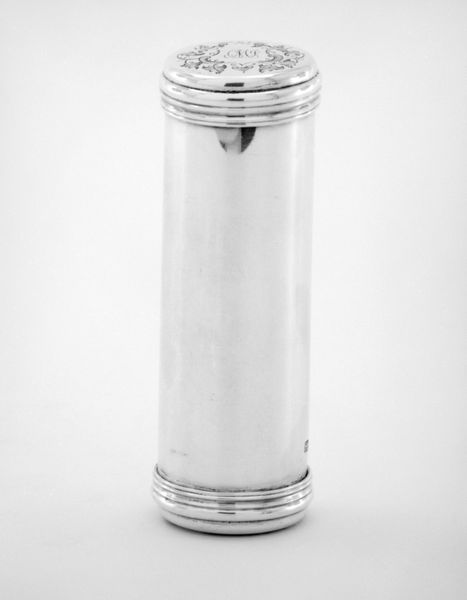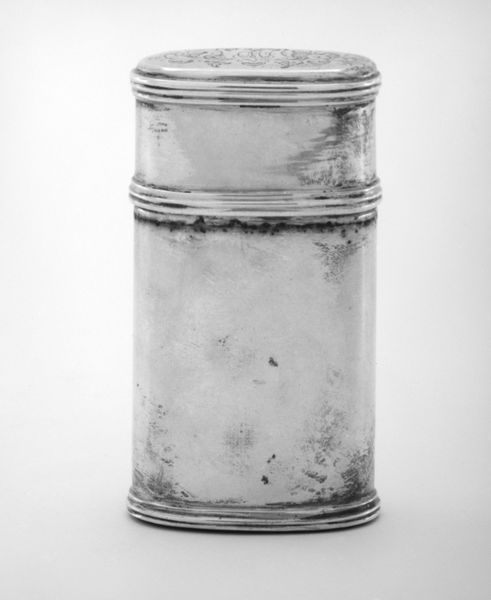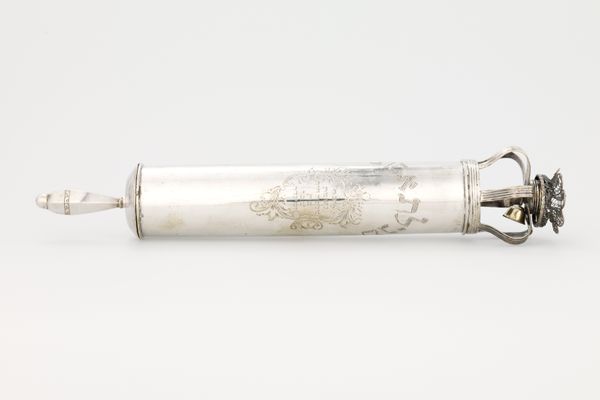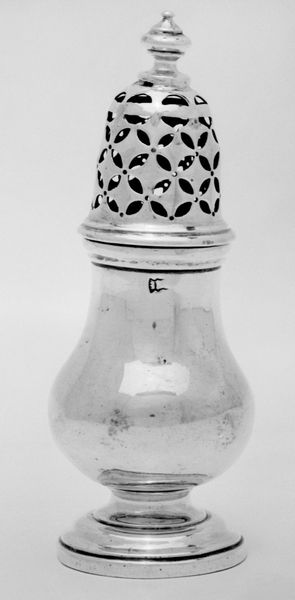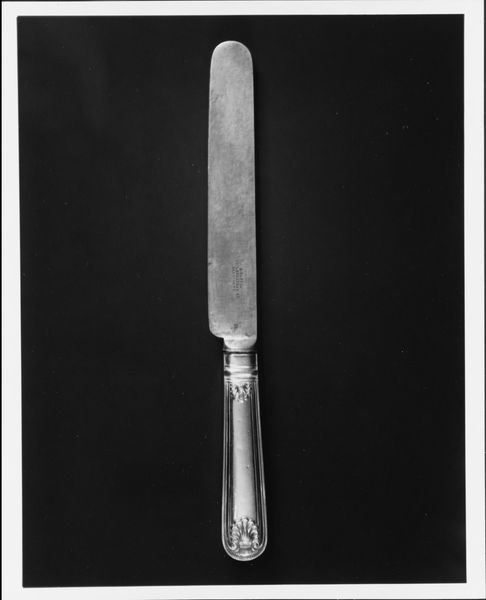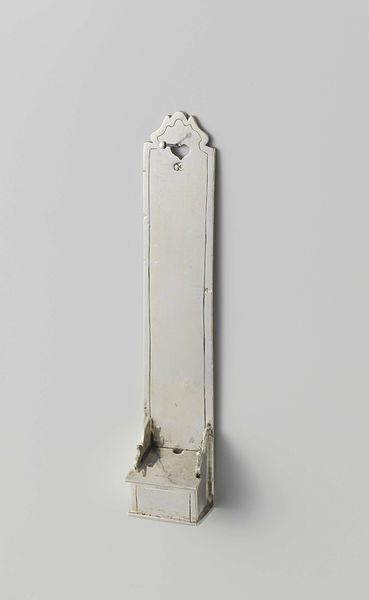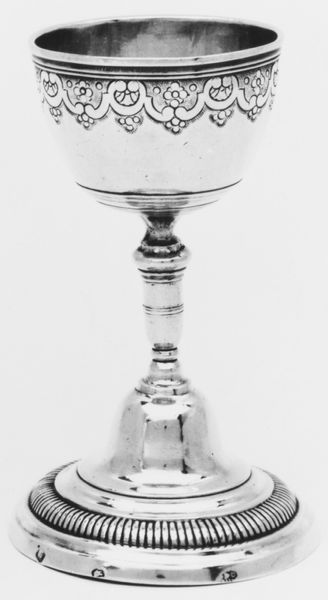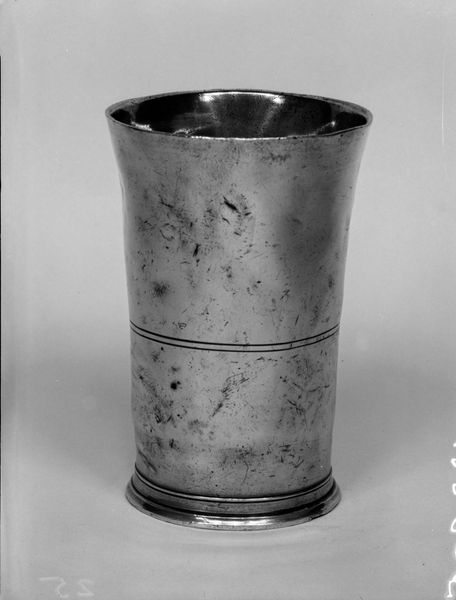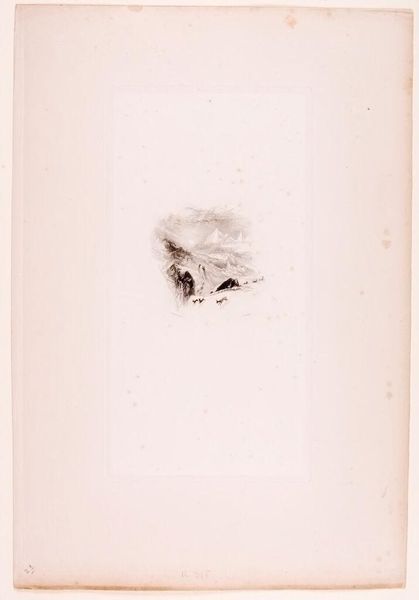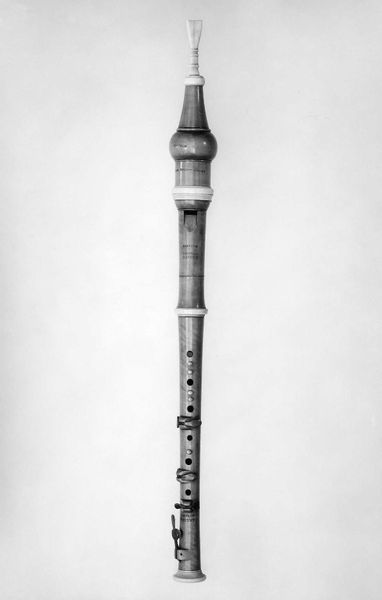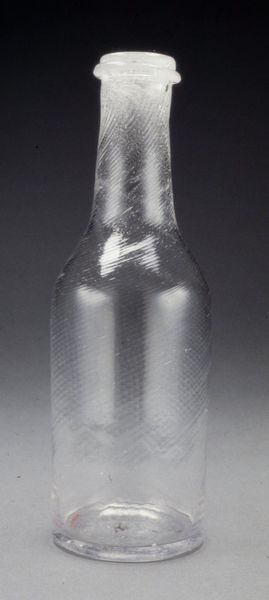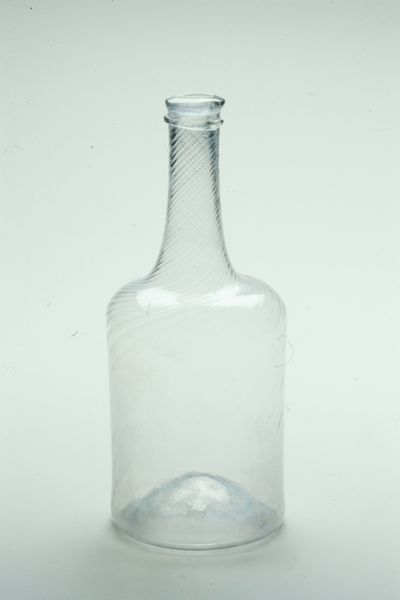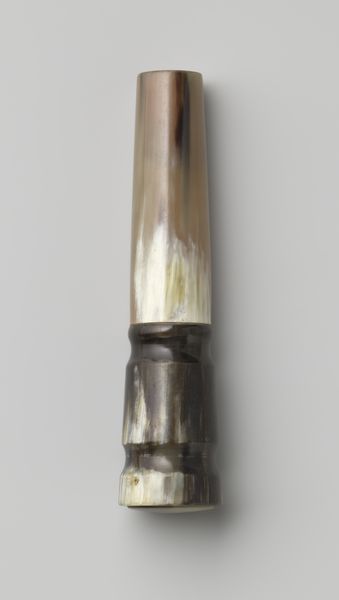
Shaving brush with handle and cover (part of a set) 1848 - 1849
0:00
0:00
silver, photography, sculpture
#
studio photography
#
silver
#
photography
#
sculpture
#
decorative-art
Dimensions: a-c) Total height 6 in. (15.2 cm); a) H. 3 in. (7.6 cm); Diam. 1 in. (2.5 cm); b) H. (w/ cover) 3 3/8 in. (8.6 cm); Diam. 1 1/4 in. (3.2 cm); c) H. 5/16 in. (0.8 cm); Diam. 1 1/4in. (3.2 cm)
Copyright: Public Domain
Curator: What strikes me first is the stark simplicity of this silver shaving brush and its cover. There's a strange intimacy to such a personal grooming item rendered with this level of attention. Editor: I'm drawn in by the materiality, the way the silver reflects the light so distinctly. It elevates what is ostensibly a functional object to something more sculptural, almost totemic. And I am not really surprised it is exhibited at the Met, in New York. Curator: Absolutely. Crafted by Johann Bernhard Hertz, likely between 1848 and 1849, the shaving brush transcends mere utility. In the mid-19th century, items like these, especially when fashioned from precious metals, served as visible markers of status and taste. The silver speaks to both material wealth, and access to refinement, that helped reinforce social identities. Editor: Beyond wealth, consider the ritualistic aspect. Shaving, traditionally a masculine practice, connects the individual to a wider cultural understanding of grooming, propriety, and perhaps even performative manliness, at the heart of Victorian imagery. The deliberate design implies that those cultural ideas were carefully cultivated in the era. Curator: True. It makes one ponder about this shaving brush as a vessel for transmitting cultural ideals. Silver has often carried symbolic weight related to purity and value. By choosing silver, Hertz imbued an ordinary object with profound meaning, enhancing its perceived status and linking it to positive cultural values. Editor: Exactly. By encasing this everyday item in precious metal, the artist encourages a deeper engagement. It invites scrutiny not just of the object itself, but the daily performances that shaped gender and class roles of the time. The aesthetic treatment becomes a sort of mirror reflecting a larger narrative about cultural mores. Curator: Thinking of silver's reflective quality reinforces that mirror idea! This shaving brush becomes a potent artifact from the era that prompts to think more deeply. Editor: I appreciate the conversation a seemingly mundane object can start; a real entry point for talking about social performance, ideas, and artistic practices in the Victorian period.
Comments
No comments
Be the first to comment and join the conversation on the ultimate creative platform.
